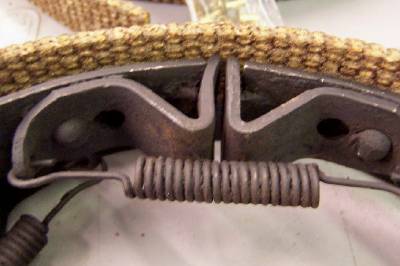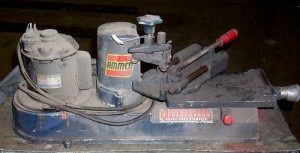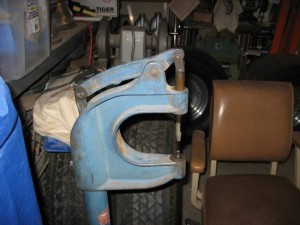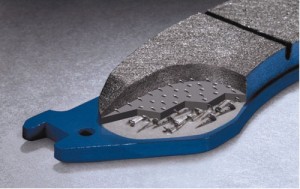 The shops could buy friction material in a roll. The woven materials were typically made of fibers like asbestos, wool or steel. The strands of the fabric were impregnated with resins and abrasives that were not fully cured.
The shops could buy friction material in a roll. The woven materials were typically made of fibers like asbestos, wool or steel. The strands of the fabric were impregnated with resins and abrasives that were not fully cured.
The technician would cut the material so that it would cover the shoes. Next, the material would be fastened with rivets to the shoes. After the material was secured, the technician would grind the shoe to match the radius of the drum.
As the performance of vehicles increased, the friction materials changed. The woven style lengths of material were not able to stand the heat generated by more vehicles that had twice the power of just 10 years ago. Fully cured molded friction materials were the answer. These were called “matched sets.”
If you were a shop that relined its own brake shoes, it required some tools that might be completely foreign to new technicians or maybe found in the antiques listings on eBay. Brake Shoe Radius Grinder: This tool would grind the arc of the shoe to match the drum. The radius was taken from the diameter of the drum. If the radius of the shoe was not right, it could cause uneven braking. This was critical in the days before hydraulic brakes when the forces were not equalized by the fluid pressure. The grinder would send large amounts of brake dust into the air.
Brake Shoe Radius Grinder: This tool would grind the arc of the shoe to match the drum. The radius was taken from the diameter of the drum. If the radius of the shoe was not right, it could cause uneven braking. This was critical in the days before hydraulic brakes when the forces were not equalized by the fluid pressure. The grinder would send large amounts of brake dust into the air.
 Riveting/Grinding Press: Brake shoe and clutch rivets where typically made of brass or other malleable metal. The c-shaped presses typically had two functions. First, to serve as a press to drill out or grind down the old rivet. Second, with a foot-operated pedal the operator could set the new rivets into place.
Riveting/Grinding Press: Brake shoe and clutch rivets where typically made of brass or other malleable metal. The c-shaped presses typically had two functions. First, to serve as a press to drill out or grind down the old rivet. Second, with a foot-operated pedal the operator could set the new rivets into place.
Even in the 1930s, the brake friction industry was moving away from relining shoes in-house. The trend was driven by increased vehicle performance and better roads where higher speeds could be achieved.
Because of World War II research, adhesives had improved dramatically. Chemists were able to create synthetic adhesives that could out perform organic glues under extreme heat.
In the late 1960s, the market began to shift to disc brakes. Many smaller brake bonders were not able to keep up with the changes. By the mid 1970s as the number of brake relines diminished and with increased competition from larger manufacturers, the local brake bonder/jobber practically disappeared.
Today
While backing plates and attachment methods have not received the same level of marketing attention as the friction materials, they have improved dramatically. Rivets are still used in a few applications where the performance and economical parameters call for it. Integral molding where the friction material is pushed through the holes in the backing plate (in conjunction with glue) is a common method of attachment.
On some demanding applications where noise and safety are critical to the performance of the entire brake pad, some manufacturers are turning to new attachment methods. Some manufacturers are creating stronger bonds with the backing plate through special surface treatments that create more surface area for bonding. Another approach has been new methods of mechanical attachment.
 NUCAP is able to put hundreds of small hooks on the plate that grab the friction material. The hooks increase the shear strength and can prevent edge lift of the friction material. Not only can it increase overall safety, but it can decrease incidents of unwanted noise.
NUCAP is able to put hundreds of small hooks on the plate that grab the friction material. The hooks increase the shear strength and can prevent edge lift of the friction material. Not only can it increase overall safety, but it can decrease incidents of unwanted noise.